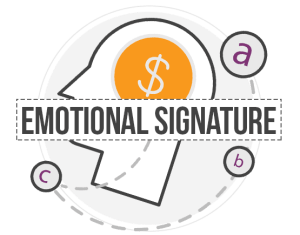We have all been in line or on hold for customer service, waiting for a company to get back to us. We tap our toes and roll our eyes as we wait. Then, when our wait time runs long and our patience runs short we get cranky and think, this customer service crew is really inept today.
Or are they?
Last February, the Harvard Business Review (HBR) published, “Why is Customer Service so Bad? Because it’s Profitable.” To summarize, researchers learned that lousy customer service is not always the product of ineptitude on the part of the company but instead sometimes a deliberate strategy to save money. Long phone queues and poor response times cause customers to give up, at least for the time being and try again later. However, a percentage of those people who bailed out of the process won’t try again later, which saves the company money.
We discussed the profitability of lousy customer service on a recent podcast. I am sure that the research is sound, and the authors that wrote the piece can show statistically based on the data they were using that bad customer service can contribute to profitability. However, I disagree fundamentally with these findings as a strategy in most business cases.
While this strategy outlined in HBR might be profitable in the short term, it will not be beneficial in the long run. That said, I appreciate how this article introduces the discussion about the opportunity that lies within customer complaints.
The O2-Shaw Debacle
The communications company O2 is Lorraine’s and mine mobile phone company in England. Recently, O2 texted me to ask if I was satisfied with my service. I sent them a text message that said, “No.”
Now, O2 started off doing well with this interaction. O2 Customer Service called me within 30 minutes of my negative response to ask why I was dissatisfied with my service. I went through the litany of reasons, which I won’t bore you with today. After listening, the O2 customer service agent proposed replacing our SIM cards to address some of the problems I mentioned. So far, so good.
The day after the call with O2 and before the SIM cards arrived, my wife and I attended a concert at the O2 arena in London. Afterward, we were taking the tube home. I didn’t know what stop we should get off on, however, so I went to look it up on my phone. Unfortunately, my phone didn’t work. I retraced my steps back into the arena to the O2 shop there to see if we could solve the problem. To make a long story short, they tried but couldn’t.
I made it home, but, to my chagrin, did not find my SIM cards waiting for me. The next day I called again…and ‘round the mulberry bush we go. I gave up after multiple attempts to fix my phone issues, including two or three additional phone calls. Then, three days after all these activities, I received no less than six SIM cards instead of the two we had requested. Then, we had to work out which SIM cards to use and so on, which was more of a bloody hassle and not at all what the customer service department would have wanted.
The irony here is that O2 was trying to improve its service but instead made it worse. However, it was not deliberate. The agents I worked with did seem to be trying in earnest to fix my problem; it was the actual fixing of the problem that flummoxed them. Most organizations do not set out to anger and disappoint customers. Most CEOs don’t wake up in the morning and go, “Right. What is it we can do to screw the customer up today?”
When you consider all the interactions I had, this terrible experience cost O2 a lot of time and money, between the employee time and energy and the hard costs of the multitudinous SIM cards shipped. Per the HBR article, if O2 had decided to ignore my negative text in the first place, then they wouldn’t have incurred all of those costs and would no doubt have been more profitable, especially since I am still their customer.
Science Works When Staying Within the Boundaries
The question becomes, what do we do with this idea that deliberate poor service meant to wear out customers is profitable? Should we all stand up and go home and let the customers sort it out? Of course not. However, it’s useful to consider the boundaries where the HBR findings are true and, perhaps most importantly to you, where they are not.
With science, there is no universally true finding. So, scientists will often define boundaries where their result is correct. Perhaps some of you remember equations passed on in your matriculation that included the words, “in a vacuum?”
The most apparent boundary for the strategic implementation of bad customer service to boost profitability is if there is low competition. Some examples could be when there is a high barrier to entry for the competition, fewer options for providers, or contractual relationships established between providers and customers. Mobile phone service providers often employ long-term contracts with customers. As a result, a mobile company might be within the boundary of providing a less than optimal customer service that will be more profitable than offering exemplary service.
Moreover, the boundary on profitability depends on what costs you include in your calculation. Are you including customer acquisition costs? Are you computing lifetime value of a customer, and if so, over what horizon (e.g., 5, 10, 15 years)? These figures’ absence or presence will change the profitability calculation a bit. Moreover, organizations often neglect to consider the lifetime value of a customer. Knowing how much a customer is worth over 10 or 20 years helps an organization realize the importance of maintaining these relationships with excellent customer service.
There are also measures beyond direct profitability that you might wish to consider. Word-of-mouth marketing might make it easier (or harder) for you to acquire different customers than without it. Which kind of referral are you likely to get if you provide lousy customer service?
Another boundary condition on poor customer service being profitable could be how expensive are the problems to solve? If you’re dealing with customer service issues where most problems can be solved with a sincere apology and refunding a few dollars, then you’re probably not in a place where it’s going to make sense to create hurdles for your customers strategically. However, if a customer complaint creates a significant loss to the company, it might be profitable to ignore a bad Customer Experience.
In our business growth consultancy, we were working with a water utility to improve their customer experience. There was an instance where a customer complained about sewage in their house. It was a significant issue for the water utility (and one could argue for the customer as well).
I learned that this customer had been through about six or seven different layers of management with their problem. Finally, there was a meeting about the complaint with 12 senior people. The customer was asking for $2,000. I pointed out to the company that they spent at least that much on the one meeting with 12 senior people in it, let alone all of the other stuff that they had put the customer through already. I argued they could have built the customer a new house with all the costs created by avoiding dealing with the complaint.
It is also critical to consider one of my favorite topics, customers’ memories of your experience. One interesting thing about memories is that they change over time. Moreover, when you recall a memory, you change it. For example, my recent O2 experience changes when I think about it. Recalling the hassle and how long it took to get it working and how annoyed I felt about it changes the memory each time—and makes it worse. Making memories of a bad customer experience worse is one of the long-term costs of forcing customers through a loop where they have to relive that complaint time after time after time.
The mindset as an organization is significant here, too. Is your mindset to put enough people on hold for 15 minutes or more while you get coffee to make higher profits? Or is your mindset to invest in getting that wait time down to two minutes, and make more profit by wowing customers?
So, Is Bad Customer Service Profitable for You?
The HBR article is thought-provoking. What underpins it is numbers. So I would encourage you to look at the costs associated with poor customer experience. Consider the costs of hearing those complaints, because you might be surprised how much they cost you in operations. From a management perspective, there are costs inherent in the employee time spent hearing and placating upset customers. Another hit to your bottom line exists in the lost customer’s lifetime value that results from not fixing the problem. A third and hard to predict detractor from profitability is the potential business lost by unhappy customers telling people they know about your poor experience and scaring potential new customers away.
Compare these costs to the benefits to your bottom line if you fix these problems in the customer process. In our business growth consultancy, we have worked with organizations on this exact issue. We have learned that by adjusting a customer experience, you can reduce the resources devoted to a customer complaint department by half. What’s more, you not only reduce your costs for dealing with customer complaints, but you also gain more customer-driven growth by improving the Customer Experience.
Depending on your boundaries, businesses exist for whom these findings of lousy customer service contributing to profitability could be true. That said, I would caution companies from jumping into this strategy with both feet. Many, many businesses are not within these boundaries.
How will you know if you are within the boundaries? First, consider your market. If you are a cable provider, you might be one of the companies within the limits where this idea of lousy service being profitable is accurate. However, if your customers have opportunities to shop elsewhere or if getting new customers has high acquisition costs, you are likely not within the boundaries.
Bad customer service being profitable runs contrary to our intuitions. It is a sign that there are limits to applying this strategy. So, be careful. Your default should be striving for excellent Customer Experiences that propels customer-driven growth. Otherwise, you might let bad customer experiences inspire customer-driven downsizing.
To hear more about The Strength of Customer’s Emotions in more detail, listen to the complete podcast here.
 What customers say they want and what they really want are often different things. It is vital to know what drives value for your organization. Our Emotional Signature research can tell you where you are compared to other organizations and what to focus on to drive value for your customers. To learn more, please click here.
What customers say they want and what they really want are often different things. It is vital to know what drives value for your organization. Our Emotional Signature research can tell you where you are compared to other organizations and what to focus on to drive value for your customers. To learn more, please click here.
Colin Shaw is the founder and CEO of Beyond Philosophy, one of the world’s leading Customer experience consultancy & training organizations. Colin is an international author of six bestselling books and an engaging keynote speaker.
Follow Colin Shaw on Twitter @ColinShaw_CX


